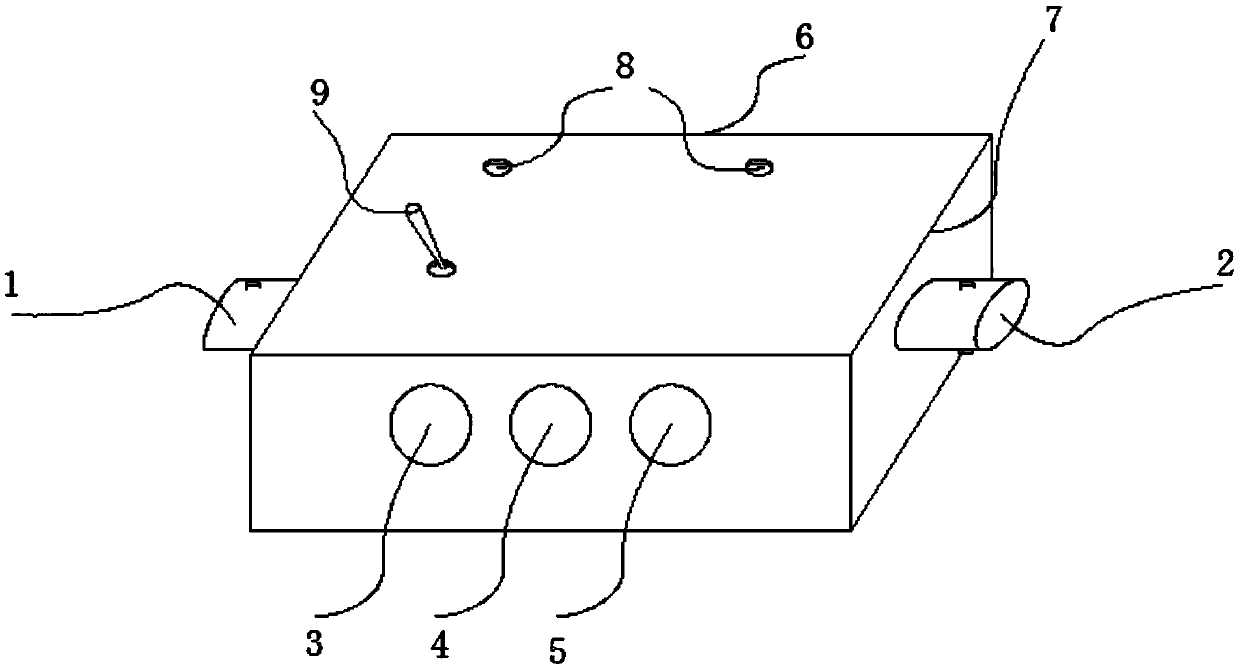High-precision self-adaptive human body physiological signal tester and testing method
A signal tester, human physiological technology, applied in the direction of instruments, applications, electrical digital data processing, etc., can solve the problems of expensive instruments, cumbersome detection methods, low detection accuracy, etc., and achieve the effect of improving accuracy and signal processing accuracy
- Summary
- Abstract
- Description
- Claims
- Application Information
AI Technical Summary
Problems solved by technology
Method used
Image
Examples
Embodiment 1
[0041] In order to overcome the problems existing in the prior art of human physiological signal testing, an embodiment of the present invention proposes a high-precision self-adapting human physiological signal tester and testing method.
[0042] Such as Figure 1 to Figure 4 As shown, the high-precision self-adaptive human physiological signal tester described in this embodiment includes a shielding shell 7 and a PCB circuit board 15, and the PCB circuit board 15 is provided with a circuit wiring area 10, a BNC connector 11, a signal gating switch 12 and a signal The magnification adjustment knob 13, the circuit wiring area 10 includes an adaptive matching adjustment circuit module 101, a high-impedance signal receiving circuit module 102, a first-stage amplification circuit module 103, a voltage following circuit module 104, a second-stage amplification and low-pass filter circuit Module 105, signal inverting amplification circuit module 106, protection circuit module 107, ...
Embodiment 2
[0057] According to the technical scheme described in embodiment 1, and in combination Figures 1 to 4 , carry out the tester debugging experiment:
[0058] The signal source inputs standard sinusoidal signals with a frequency of 10-400Hz and an amplitude of 0.55-1.18mV to the detector respectively. In order to measure the stability and accuracy of the detector, the average value of 5 signals for each signal type is taken as the measurement result analysis, and the debugging experimental data processing results are shown in Table 1:
[0059]
[0060] Table 1
[0061] From the data processing results of the tester debugging experiment shown in Table 1, it can be concluded that the amplitude error and frequency response error of the tester are within 0.5%, and the results of multiple measurements are consistent. It can be concluded that the high-precision adaptive human physiological signal tester can measure low-frequency weak signals stably and accurately, which meets the...
Embodiment 3
[0063] According to the technical scheme described in embodiment 1, and in combination Figures 1 to 4 , for human pulse signal detection:
[0064] First, connect the detector, connect the signal gating switch to signal path 2, and test that the detector can work normally; secondly, fix the pulse sensor at the radial artery of the tester's arm and connect the sensor signal output to the detector input Then, observe the pulse signal waveform on the oscilloscope to collect waveform data after the waveform is stable (the tester is in a resting and stable state at this time); finally, analyze and process the sampled data to obtain a pulse signal without noise interference. Experimental testers are 23-year-old and 26-year-old female and male without medical history. The time domain and frequency spectrum signals of the experimental results are as follows: Figure 5 to Figure 10 shown.
[0065] Figure 5 to Figure 10 The pulse experiment test results are shown: Figure 5 , Ima...
PUM
 Login to View More
Login to View More Abstract
Description
Claims
Application Information
 Login to View More
Login to View More - R&D
- Intellectual Property
- Life Sciences
- Materials
- Tech Scout
- Unparalleled Data Quality
- Higher Quality Content
- 60% Fewer Hallucinations
Browse by: Latest US Patents, China's latest patents, Technical Efficacy Thesaurus, Application Domain, Technology Topic, Popular Technical Reports.
© 2025 PatSnap. All rights reserved.Legal|Privacy policy|Modern Slavery Act Transparency Statement|Sitemap|About US| Contact US: help@patsnap.com



